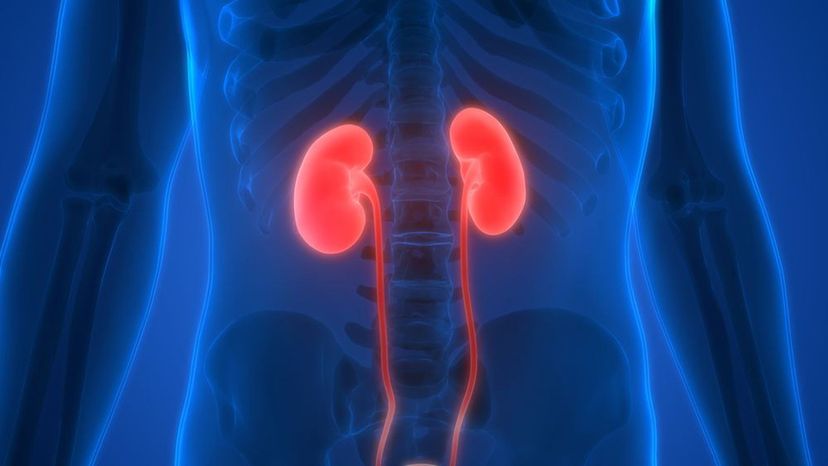
About This Quiz
You know that the leg bone is connected to the foot bone, but you're in trouble if that's all you know about your body. Take this quiz to see just how much you know.The heart moves 1.3 gallons of blood through your body every minute of every day.
The skeletal system provides a frame for the body. Without the skeletal system, we'd all be a limp pile.
Our ears help us hear, balance and speak. They do not help us taste.
Advertisement
The contraction of the diaphragm enables the lungs to take in oxygen. The diaphragm is never at rest.
The pupil and the iris are part of the eye. Other parts of the eye include the sclera and the cornea.
The human body has over 10 trillion cells.
Advertisement
There are about 62,000 miles of blood vessels in the human body. They transport about 1.3 gallons of blood.
Your right lung is bigger than your left. That's because your heart is on the left side of your body and it takes up space in the chest cavity.
When you breathe in, you take in oxygen. The oxygen fills up the air sacs in the lungs.
Advertisement
When you breathe out, you expel carbon dioxide.
The millions of little airs sacs in the lungs are called alveoli.
Urine is a waste product of the renal system. The kidneys help filter waste products.
Advertisement
The kidneys filter all of the blood in your body every 30 minutes. Toxins are then expelled from the body.
The human body has two kidneys. You can live with only one.
Digestion occurs in the gastrointestinal system. The process begins with ingestion.
Advertisement
Neurons are part of the nervous system. Their job is to send signals throughout the body.
The largest muscle of the body is the gluteus maximus. It's located in your rear end.
The smallest muscle of the body is the stapedius. It is located inside your ear.
Advertisement
The clavicle is the bone people break most often. The clavicle is also called the collar bone.
Glands are part of the endocrine system. Glands secrete hormones.
The human heart has four chambers. Two on the left and two on the right.
Advertisement
The brain processes thoughts and emotions. It is also responsible for interpreting environmental cues.
The cerebellum is part of the brain. It helps coordinate muscle movement.
The brain is divided into two hemispheres. They are called the right hemisphere and the left hemisphere.
Advertisement
The ear is divided into three sections. These sections are the outer ear, the middle ear and the inner ear.
Our eyes convert light into nerve impulses. They send information to the brain.
Genetics is the scientific study of genes. Genes help decide how we look, act and how healthy we will be.
Advertisement
There are 46 chromosomes in each human cell. They are housed in the cell's nucleus.
The heart, blood and blood vessels are part of the circulatory system. The circulatory system never rests.
Arteries carry blood away from the heart.
Advertisement
Veins move blood toward the heart.
The human heart beats about 70 times per minute. It is never at rest.
The bladder is part of the urinary system. The kidneys are also part of this sytem.
Advertisement
The respiratory system gathers oxygen from the air. The lungs push out carbon dioxide.